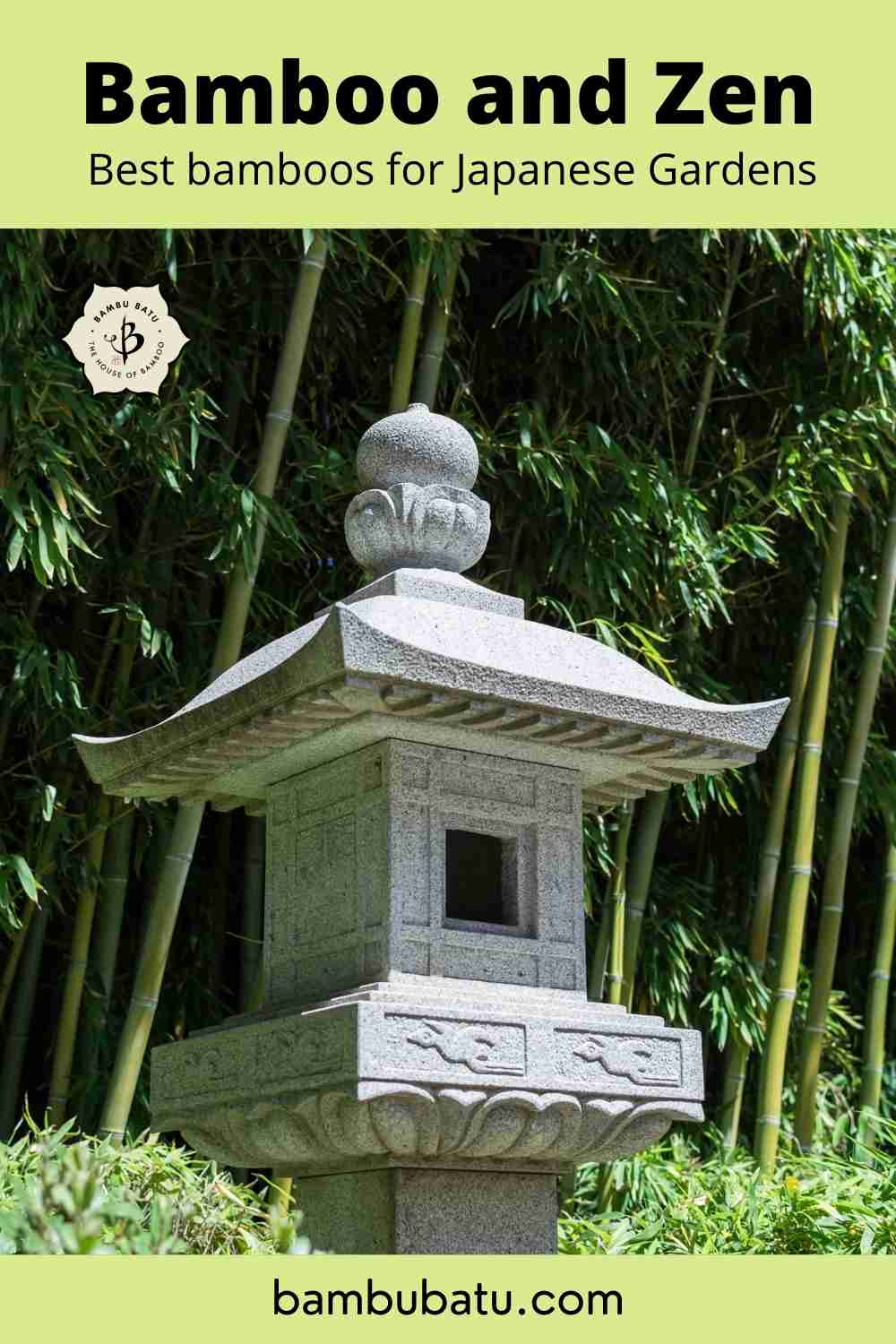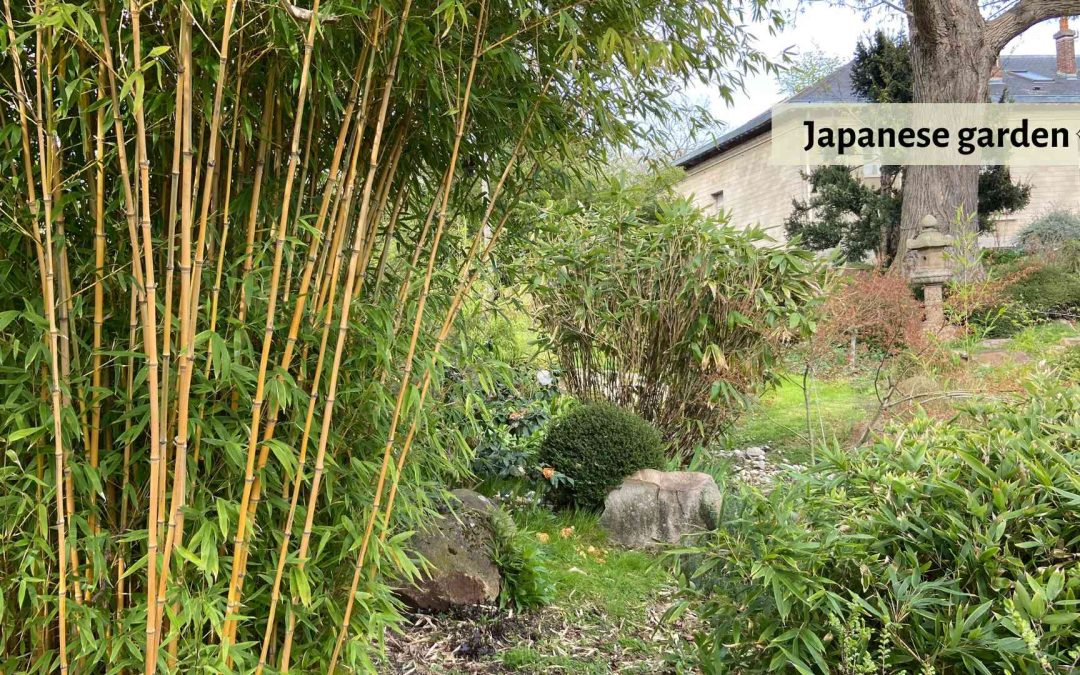These days, it seems, we could all use a little more Zen access in our lives. And what better place to enjoy a moment of Zen than in a well-kept Japanese garden? The process of creating and maintaining a Japanese garden can be just as satisfying, if not more so, as the peace and tranquility you get from quietly passing through one. So don’t pull your hair out trying to decide which plants to grow in this soothing landscape. Among the Japanese maples and Japanese pines, an Asia garden should naturally include some bamboo. But with more than 1,000 varieties of bamboo to choose from, which ones are most suitable for the Japanese garden?
Bamboo is an obvious choice when you’re planting a Japanese garden. But selecting the best bamboo species may be more difficult. A purist will want to look for bamboo of Japanese origin, and the genus Sasa is almost exclusively native to the Land of the Rising Sun. Other Japanese varieties belong to Phyllostachys, Pseudosasa and Semiarundinaria. You can also find several species whose common names are suggestive of Japan. More importantly, however, when you choose a bamboo, you must consider its size, growth habit and preferred climate.
NOTE: This article first appeared in December 2020, last updated in September 2024.
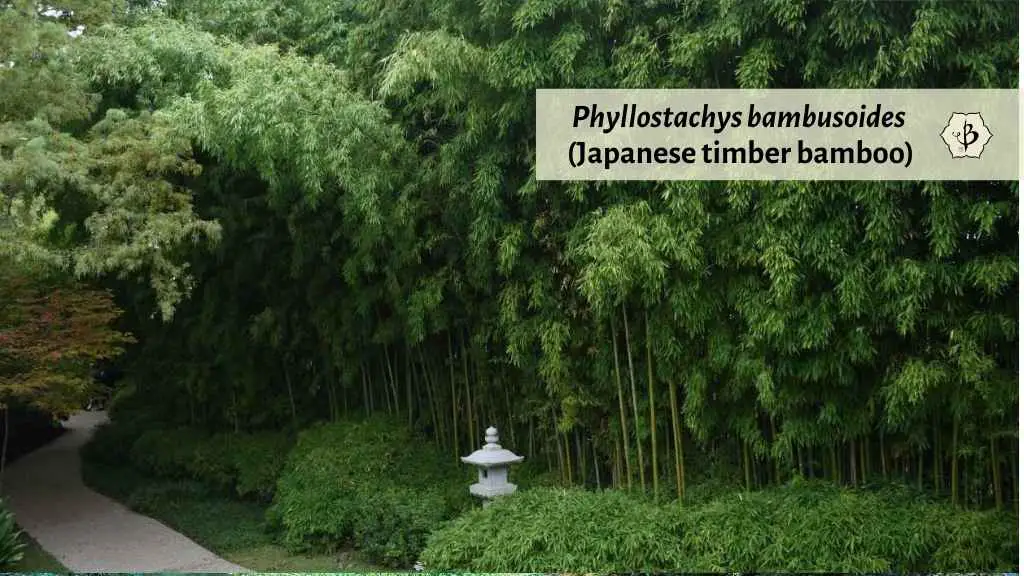
Japanese bamboo species
Genus Sasa
According to current classifications, this is the only genus of bamboo exclusively native to Japan. Therefore, if you’re planting a Japanese garden, and you’re looking for some bamboo in line with your theme, some Sasa would be an excellent place to start.
Bamboo in the genus Sasa, also called broad-leaf bamboo, are small plants with running rhizomes. Their compact size makes them a good choice as accents or in confined spaces. Be aware, however, that the roots of this running bamboo can spread quickly if not properly contained. Like most dwarf bamboos, Sasas are native to the forest understory, and so they prefer locations with partial sunlight or mostly shade. They are also relatively cold-hardy.
Sasa kurilensis: Famous (in some social circles) for being the only bamboo species native to Russia and the northernmost naturally-occurring variety. This extreme outlier thrives in the cold and the shade, underneath the canopy of taller trees. In the right conditions, it can grow 5 or 10 feet tall. Just don’t plant it in the full sun or a place like Florida or Fresno. Cold-hardy well below 0º F.

Sasa nipponica: Perhaps the most Japanese of all Japanese bamboo, or so the name would suggest. This is a dainty dwarf like the others, with prominent nodes and large leaves.
Sasa palmata: Commonly known as broad-leaf bamboo, this is one of the taller species of Sasa. Leaves are 2 to 4 inches wide, and slender culms, no more than a half-inch thick, can grow 5 to 10 feet tall. Hardy down to around 5º F.
Sasa tsuboiana: This is a particularly robust ground cover that can get 5 or 6 feet tall, with luscious, deep green foliage. It makes a beautiful addition to the garden, providing a striking contrast alongside taller bamboos with buttery yellow culms.
Sasa veitchii: Also called Kuma-zasa, this is an especially popular variety of bamboo shrub. Its broad leaves are deep green, but in cold winters the leaf edges turn pale and take on a striking variegated appearance. They only get about 5 feet tall, but with thick, vibrant foliage. Hardy to 5º F. (See image.)

Genus Sasaella
This is a closely related genus of Japanese dwarf bamboos with running rhizomes. They tend to be even lower and more compact than Sasas, with small, delicate leaves.
Sasaella masamuneana has dark green leaves and grows 1 to 4 feet tall, depending how much sunlight it gets. ‘Albostriata’ is a variegated subspecies with striped leaves, growing 5 to 10 feet tall. Like all members of this Japanese genus, they are short and compact with slender culms and extremely vigorous roots. These plants are shade-loving and also quite cold-hardy.
Japanese timber bamboo
If you’re looking for a more stately bamboo to make a bolder impression in your garden, Phyllostachys bambusoides is a beautiful option. They are native to China and Japan. Also called Madake or Japanese timber, this splendid species thrives in a range of climates, and it’s one of the largest and most impressive varieties of temperate (as opposed to tropical) bamboo.
The towering culms can get 40 to 60 feet tall, depending on the growing conditions, and 4 to 5 inches thick. The regal canes are long and straight, with a dark green hue that gradually yellows with age. Thick culm walls make it very useful for building and construction as well. Remember, all Phyllostachys are runners, so it will need a root barrier of some kind. Hardy to at least 0º F.
Genus Pseudosasa
This genus of bamboo closely resembles Sasa, with broad, deep green foliage, but somewhat larger in overall size. Like Sasas, Pseudosasas are all runners, and they typically have just one branch at each node.
If you’ve got a Japanese garden, you can’t go wrong with Pseudosasa japonica, native to Japan and Korea. Arrow bamboo, as it’s more commonly known, is a medium-sized bamboo, with tall, slender culms, very graceful and upright. In former times, Samurai warriors would harvest the mature poles to use as arrows and spears.
The culms tend to grow thick and close together, reaching 10 to 20 feet high, and roughly an inch in diameter. They are quite adaptable to a variety of conditions, both sun and shade, and also do quite well in containers. Though it’s a vigorous grower, Arrow bamboo doesn’t spread as aggressively in cooler climates. Cold hardy to about 0º F.
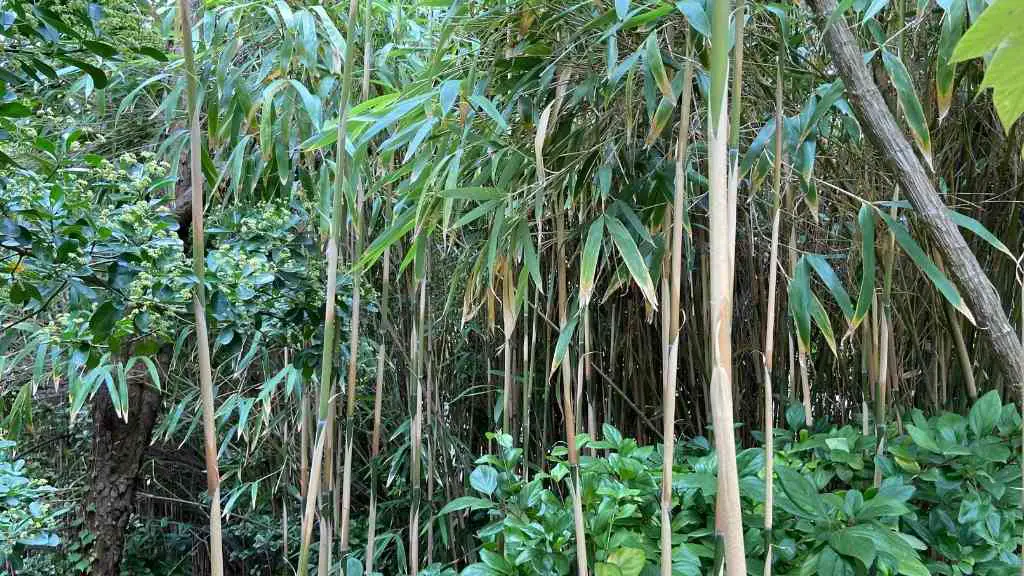
Japanese temple bamboo
Semiarundinaria fastuosa is quite a mouthful, so we prefer to call it Japanese temple bamboo. In Japan, it’s known as ‘Narihara’, and it’s a beautiful specimen. Surprising then that it’s not more popular.
The second-largest bamboo on this list, Temple bamboo can grow 30 to 40 feet tall with culms 1.5 to 2 inches thick. Elegant, upright canes are deep green, but can turn a lovely shade of maroon with age, especially in cold winters. This is also a running bamboo and cold hardy to at least 0º F.
Hiroshima bamboo
A compact bamboo with exquisitely striped foliage, some say that Hibanobambusa tranqillans ‘Shiroshima’ was the first plant to re-emerge after the atomic bombing of Hiroshima, Japan, in 1945. Whether or not that’s true is hard to say, but it’s a beautiful specimen all year long. It’s cold-hardy, shade tolerant, and even grows fairly well indoors.
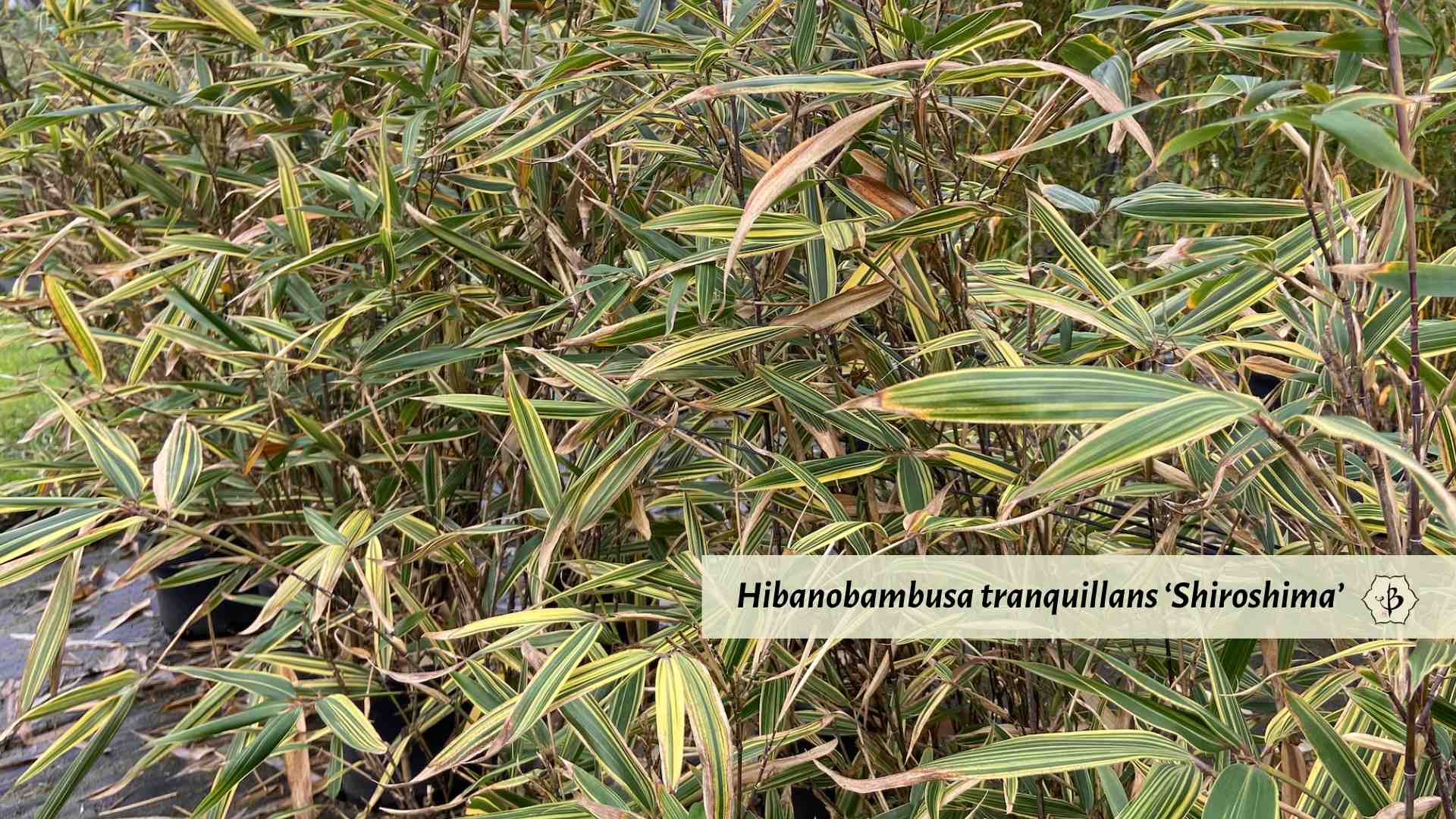
How to select the best bamboo
As you design a Japanese garden, you may want to zero in on bamboos native to that particular part of the world. But when choosing the best bamboos, there may be other, more important criteria to consider.
Size: We can divide bamboo species into three sizes: small (dwarf), medium and large (timber). And this may be the most important factor to look at when you select a bamboo. Small bamboos work great as ground covers, or as accents alongside a garden centerpiece. Timber bamboo, on the other hand, serves a whole other purpose. It probably is the centerpiece, or it can be. Know what you want from your plant, and then you’ll know whether you want a Sasa or a Madake. Or maybe a medium-sized Arrow bamboo will do the job just right.
Climate: There’s an enormous diversity of bamboo out there, and some of them need sunny, tropical weather, while others can thrive in a cool, shady environment. Tropical bamboos generally don’t do well — and many won’t even survive — in the snow. But we associate Japanese gardens with temperate climates and the possibility of snow. So be sure to select a bamboo that can withstand those freezing temperatures.
Running vs. Clumping: Another key factor to think about when planting bamboo, is how fast it will spread. Some running bamboos can be quite invasive. But the clumping species are usually more tropical. There are some though, like Fargesia, which are clumping and yet extremely cold-hardy. These are mostly medium-sized and very versatile. If you want a timber bamboo that’s clumping, you might consider Bambusa oldhamii, which can tolerate a bit of freezing, down to about 20-25º F.
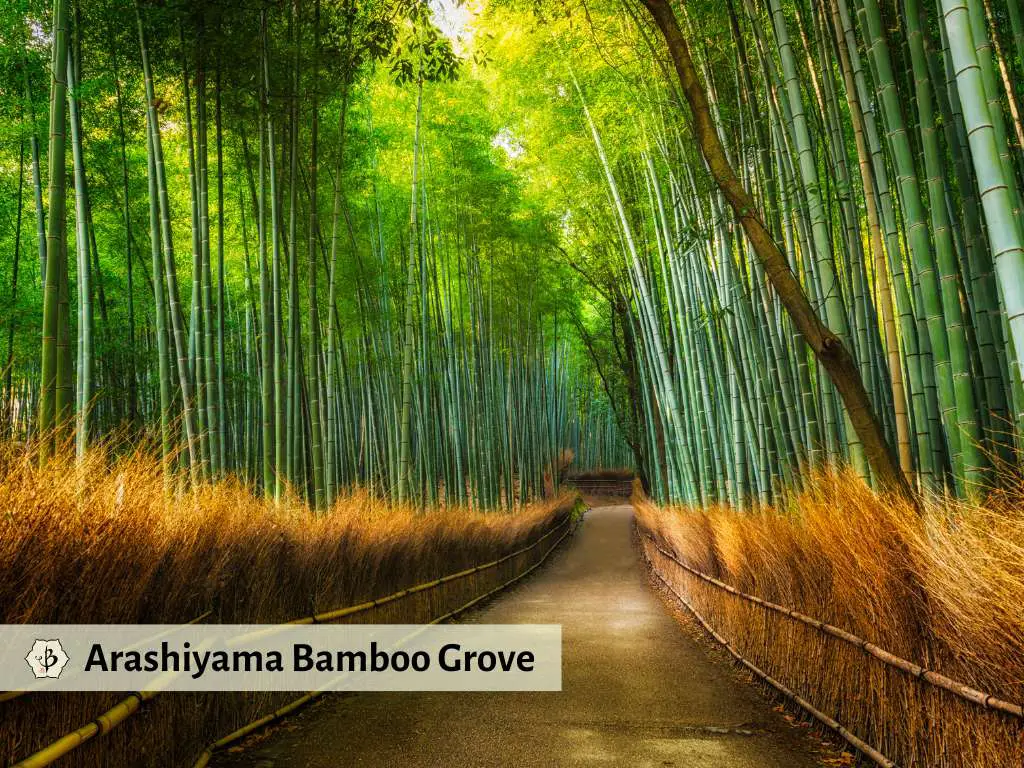
Bamboo in the Japanese garden
Larger bamboo plants
There are many ways to incorporate bamboo into a Japanese garden. You may want a specimen plant as a focal point, if you have space for it. Temple bamboo (Semiarundinaria fastuosa) could be the best choice for this, or maybe even Japanese timber (Phyllostachys bambusoides). The large and medium bamboo can also work very well as hedges or privacy screens around the garden perimeter.
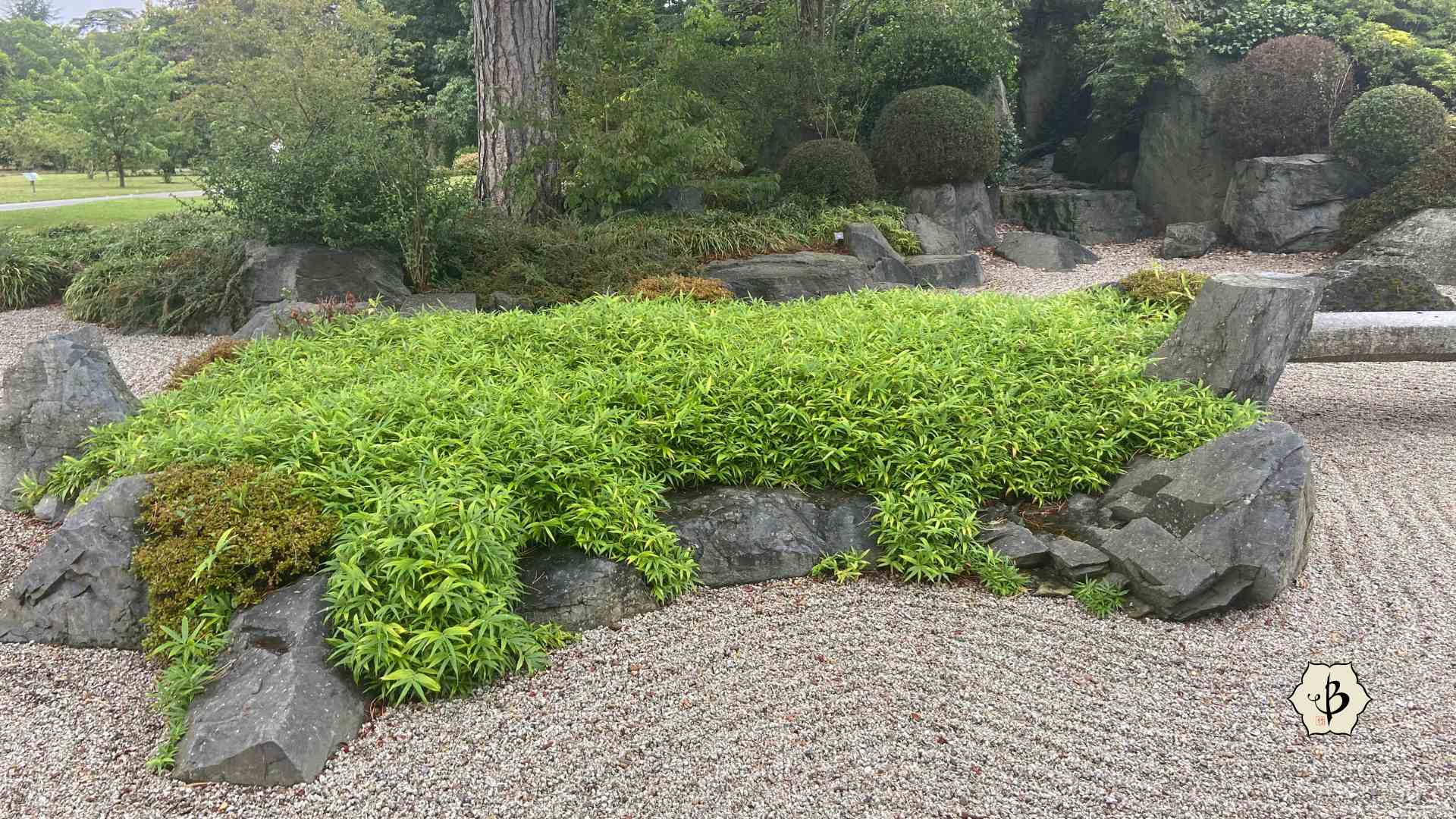
Dwarf bamboos and accents
More likely, however, you will have something like a Mugo pine or a Japanese maple for your centerpiece, and the bamboo will function more as an accent. A small variety of Sasa, described above, is excellent for this purpose. Other dwarf bamboos, like Pleioblastus or Shibataea, also make beautiful additions. Although these are running bamboos, their compact size makes them relatively easy to restrain.
Bamboo around ponds and fountains
Most Japanese gardens will also include a pond or water feature of some sort. It’s an almost essential element to bring up the Zen factor. And many gardeners are tempted to place some bamboo in their pond, alongside the horsetail and papyrus. But this is a mistake.
Bamboo will not grow directly in water or in saturated soil. The roots will get soggy, and the plant will rot in these conditions. But if you have a dwarf bamboo with running roots, the water feature is one good way to stop the spread. The roots will stop when they reach saturated soil, or bump into a thick, plastic tub, depending on how your pond is configured.
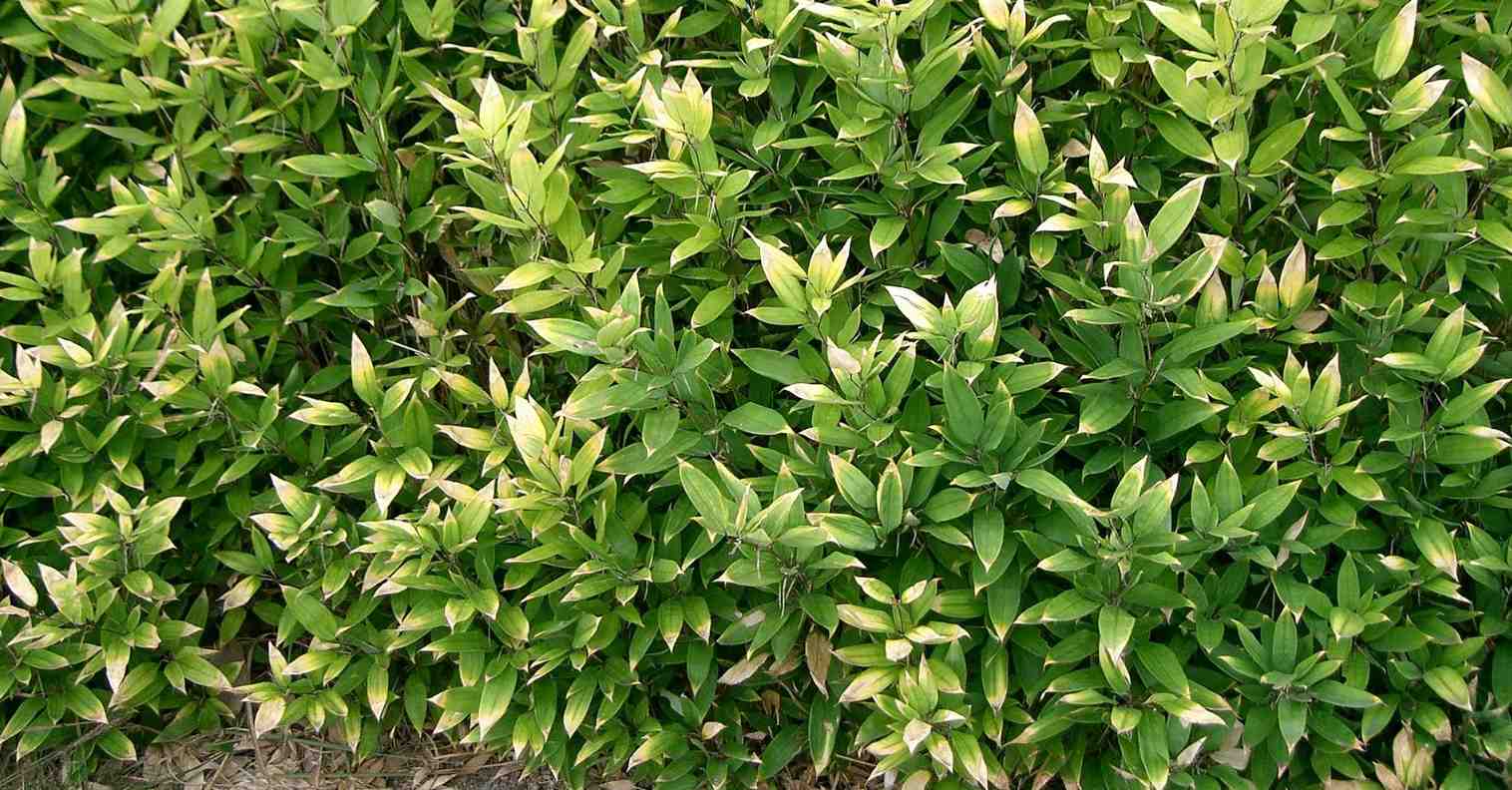
Further reading
If you’re interested in getting a little more zen in your life, either by planting bamboo or pursuing Eastern mysticism, you’ll be sure to enjoy some of these popular articles.
- How to choose the best bamboo
- 10 best bamboos for your garden
- Bamboo bonsai
- Dwarf bamboos and ground covers
- Bamboo symbolism and mythology
- Proverbs of Eastern wisdom
- Ten thousand things of Taoism
